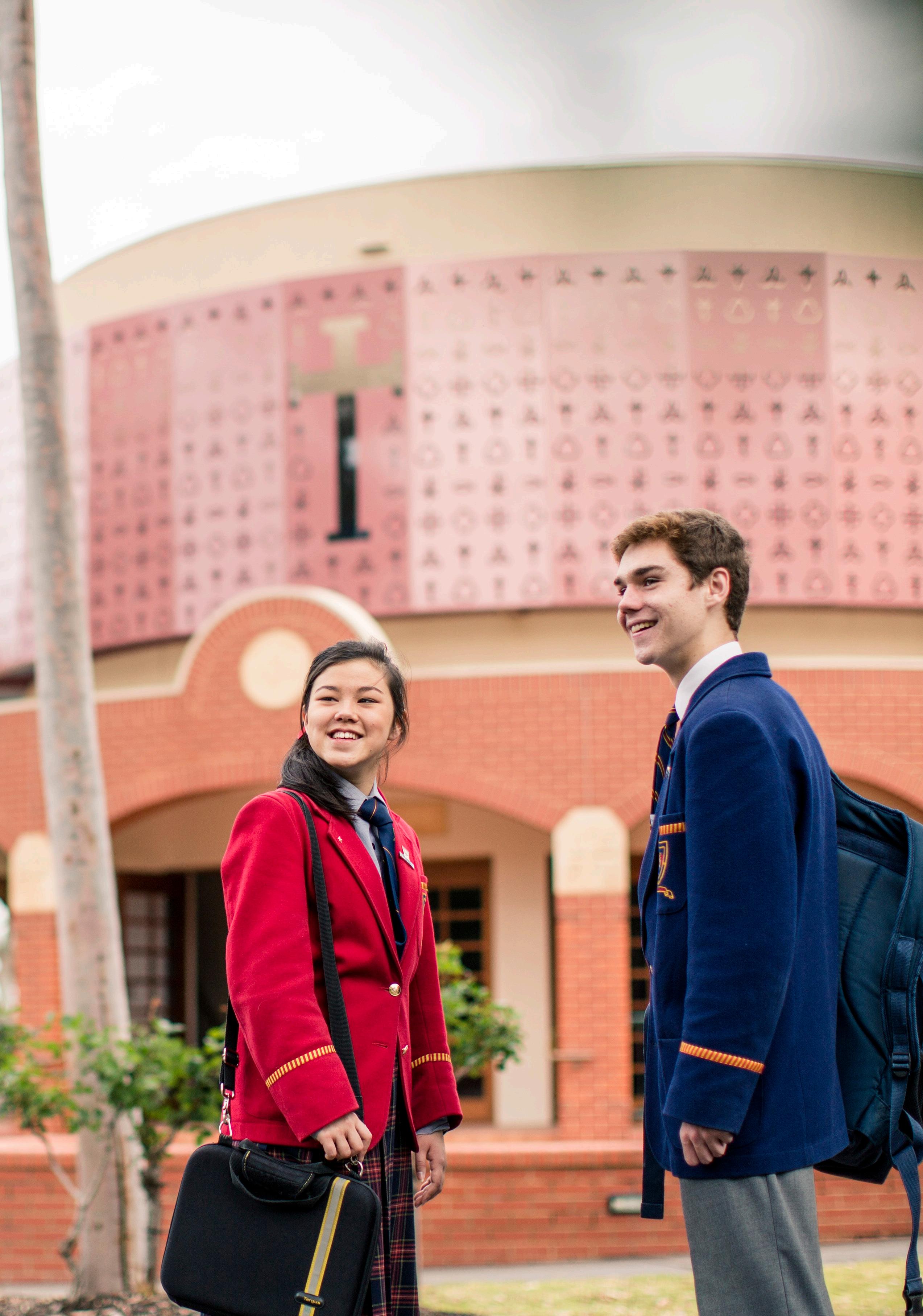

Honouring Our Old Ignatians
From 25 to 31 August, Saint Ignatius’ College celebrated Old Ignatians Week with a great lineup of events, recognising the amazing achievements and diverse contributions of our past students.
We took time to reflect on the legacy they’ve left behind — their stories continue to inspire and shape life at the College today. Their influence also gives our current students a real glimpse into the exciting possibilities that lie ahead.
To keep the celebration going, we’re delighted to share a collection of alumni stories, showcasing the incredible journeys of graduates from all over our community.
These profiles showcase the varied paths our old scholars have taken and their ongoing commitment to making the world a better place.
We hope you find their stories inspiring.
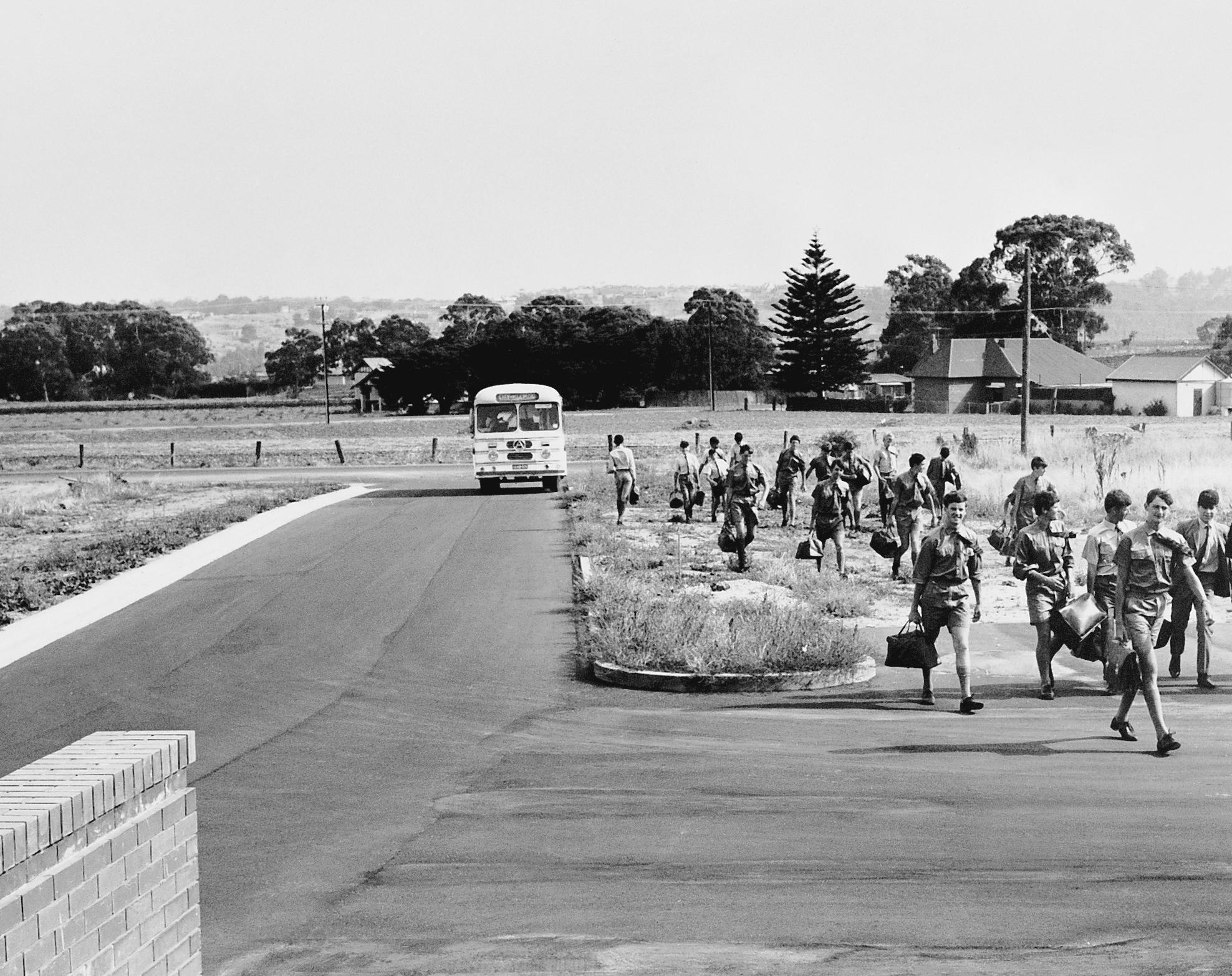
DAY AT THE NEW SENIOR CAMPUS, 1967.
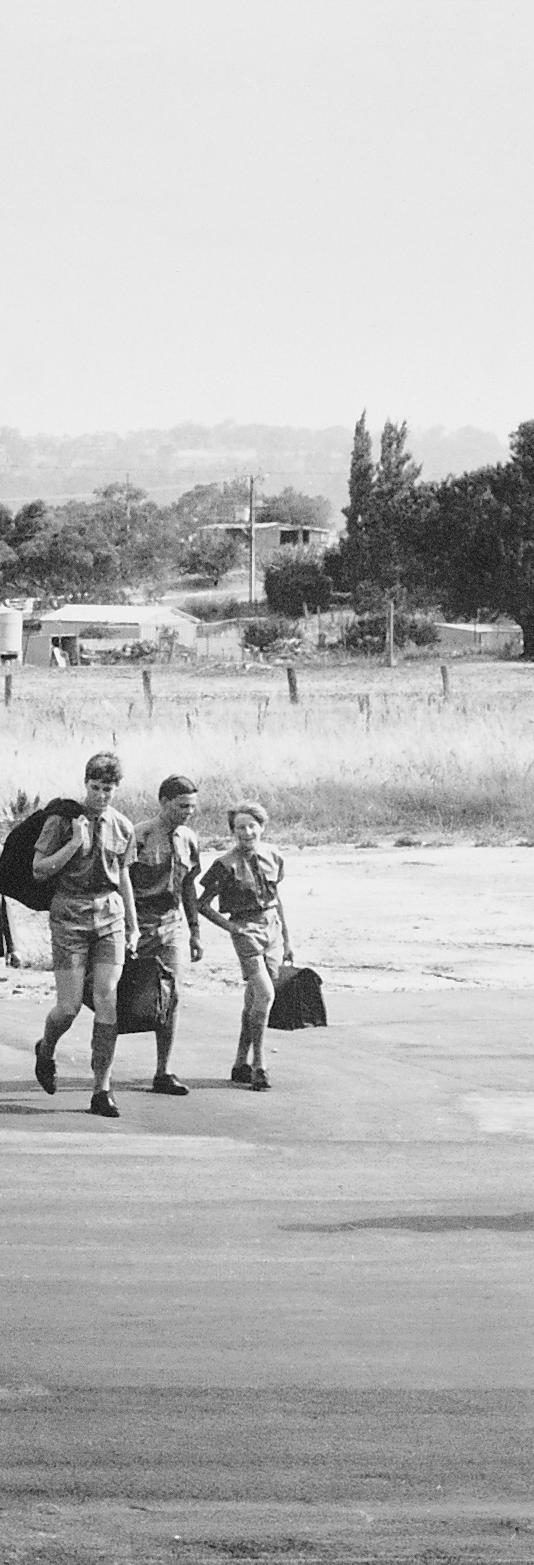
4. Lauren Letton
6. Nick Floreani
8. Paul Rawinski
10. Peter Halstead
12. Justin Beilby
14. Stephanie Ockenden
Lauren Letton
(CLASS OF 2008)
After finding her footing as a student at the College, the 34-year-old now leads in First Nations policy and serves as Treasurer of our Parents and Friends Association.
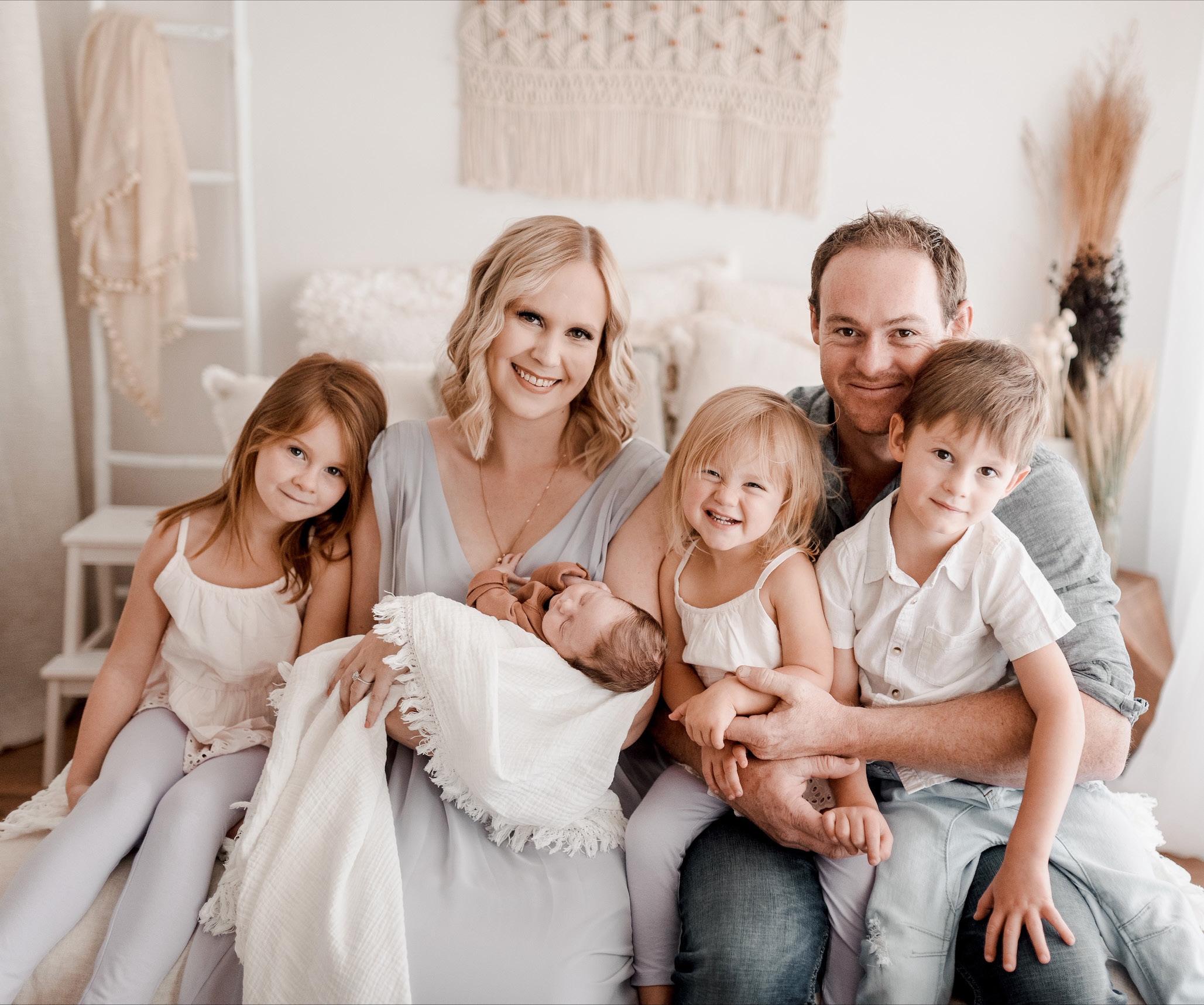
“If I could speak to my younger self, I’d say: stop doubting yourself and make the most of what’s in front of you.
LAUREN WITH DAUGHTER WILLOW (IN ARMS), FIANCÉ BRETT TUNKS AND STEPCHILDREN TAHLIA, PIPER AND MAXWELL. PHOTO: KATE & CO.
LAUREN LETTON
Lauren, how would you describe yourself as a student?
I transferred to the College in Year 9 after attending a public school and I found the adjustment quite challenging. The academic expectations were much higher than what I was used to and, as a result, my grades dropped from As and Bs to Ds and Es!
It was a difficult time. I found myself feeling out of my depth compared to my peers.
What really helped me get through that period was the support of some dedicated teachers: Ms Barry, Mr Harbon, Mr Uren, Mr Haskell, and others. Their encouragement and patience gave me the confidence to keep trying, and slowly but surely, I began to catch up. That experience taught me a lot about perseverance and the importance of having people who believe in you.
I’ll be honest, during school, I wasn’t one of the top students and that’s something I’ve come to reflect on as I’ve got older. I didn’t fully appreciate the opportunities I had at the time. If I could speak to my younger self, I’d say: stop doubting yourself and make the most of what’s in front of you.
Outside the classroom, I had a great group of friends, and we shared some really good times. Whether it was playing sport at lunch, going out during free periods, or catching up on weekends, we had fun. But we also knew when to focus and take our studies seriously.
As an old scholar, what are some of your favourite memories from your time at the College?
Some memories still make me smile to this day. One that really stands out was when our class fundraised to shave off Mr Harbon’s moustache for the Senior School’s Mission Fete Day.
He promised that whoever raised the most money would get to do the honours, and when the whole school gathered to watch it happen, it was an unforgettable moment. The energy was incredible, and it brought everyone together for such a good cause.
Another funny memory involves push-ups. Lots of them. In Mr Harbon’s class, a few of my friends were constantly talking and getting in trouble. It got to the point where they were given an automatic 20 push-ups at the start of every class. It became a running joke and, somehow, they just accepted it as part of the routine.
What really sticks with me, though, is how positive the environment was. Despite all the mischief and laughter, there was so much mutual respect between students and staff.
I don’t recall fights or drama. Everyone genuinely got along. It was such a unique atmosphere, where people looked out for each other, had fun, and enjoyed being part of a community. That’s something I’ve come to really appreciate over time.
What initially drew you to Aboriginal policy work, and what do you find most rewarding about it?
As a proud Ngarrindjeri and Narungga woman, I have a strong commitment to being a trustworthy and resilient leader and advocate for my communities. While I don’t speak on behalf of all First Nations people, I draw on my lived experience, cultural knowledge and professional expertise to help pave the way towards self-determination and equitable outcomes for our people.
My career has focused on government relations and policy, with a particular emphasis on working with First Nations communities. This work allows me to play a role in shaping decisions that directly impact our lives, ensuring that community voices are heard and respected at every level.
It’s incredibly rewarding to be in a position where I can inform both strategic and operational decision-making with the goal of achieving better, fairer outcomes.
Much of my drive comes from personal and intergenerational experiences. My ancestors were taken from their families, denied an education and forced into domestic servitude. I’ve also experienced racism, colourism and bullying [particularly as a youth]. Those experiences, though painful, shaped my resilience and my determination to be a force for change in a system that hasn’t always served us.
Do you really commute daily from the Barossa to the city? What drives you to do this, and how do you manage it?
Yes, I do drive from the Barossa to Norwood every day to drop my daughter off at IEY and then continue to the city for work. It’s about an hour and 15 minutes each way, so it’s definitely a big commitment. But one I’m more than happy to make.
I chose to send my daughter to Saint Ignatius’ College because of the incredible experience I had there myself. The education I received, the friendships I made and the opportunities that came my way all had a lasting impact on my life.
The school really invests in its students, not just academically, but as ‘whole’ people. While it sets high expectations, it also creates space for fun and growth through things like fundraising events, school fairs, and even international excursions.
More importantly, the school focuses on the wellbeing of its students. They’re supported academically, physically and mentally. They’re encouraged to give back, to care for others and to grow into community-minded individuals—values that I believe are just as important as good grades.
Like any parent, I want to give my daughter the best start in life, and I truly believe that access to a strong, supportive education can transform a child’s future.
Nick Floreani KC
(CLASS OF 1989)
From global tribunals to military courts, King’s Counsel Nick Floreani has carved out a distinguished and distinctly international legal career.

NICK FLOREANI KC
It was about a class action brought in New York, where the Swiss banks basically admitted that they had held on to Holocaust victims’ money and made it impossible for the relatives of those victims to access it.
It’s no myth that many Saint Ignatius’ College students go on to pursue careers in law.
Old Ignatian Nick Floreani is a leading commercial King’s Counsel, specialising in construction and professional indemnity disputes. He notes that there are currently five other barristers from the College practising alongside him at Jeffcott Chambers.
“I think it’s got something to do with the Jesuits and the way they teach,” Nick says. “The Jesuits have always been about education, number one, but they’ve also been about being freethinking. So, I think that must just be amenable to legal studies.”
At 53, Nicholas is one of only around 50 King’s Counsel and Senior Counsel in Adelaide—the latter title preferred by those who choose not to adopt the royal designation. Such titles are awarded to senior barristers through a rigorous selection process.
“It’s certainly a long path [to become a KC]; it was my ambition to do that,” Nick says. “There were definitely times when I didn’t think I would get there, because it’s quite a competitive process. But I’m very glad that I did.”
That said, the recognition comes with a challenge. “What it means for me is that everything I do is so much harder. They don’t get me to do the easy stuff anymore. But it’s also very interesting work.”
‘Interesting’ is a fair description of Nick’s legal career. He has worked in nearly every Australian capital city, except Melbourne, as well as London and Zurich, at different firms.
While based in Switzerland, Nick worked for the Claims Resolution Tribunal, arbitrating World War II-era claims on unclaimed Swiss bank accounts.
“It was about a class action brought in New York, where the Swiss banks basically admitted that they had held on to Holocaust victims’ money and made it impossible for the relatives of those victims to access it.
“They eventually settled the case for about $US3.2 billion, but our job was to find the owners, which, as you can imagine, was

extremely difficult. We had to match historical banking records with the stories that survivors or their relatives told us. You had to make a decision one way or the other. It was very interesting; more or less like a United Nations commission.”
Back in Australia, Nicholas served as a Squadron Leader with the Royal Australian Air Force, appearing before the Australian Defence Force Disciplinary Tribunals in that capacity. In 2020, he represented a Defence member in the Inspector-General of the Australian Defence Force inquiry, which examined the conduct of Australia’s Special Operations Task Group in Afghanistan from 2005 to 2016.
Today, alongside his commercial law practice, Nicholas also serves on the Parole Board, an independent statutory body responsible for determining prisoner releases and managing parole conditions.
“I used to do criminal work, so I know enough about that area. But the Parole Board role is document-heavy, which suited my skills,” Nick says. “Every week, I sit on a panel with two others—usually people with extensive experience in Corrections or the mental health space—and we interview prisoners. It’s a risk assessment job more than anything. When you get to see the whole prison system working, it is encouraging.”
Surprisingly, Nicholas never participated in debating during his school years, despite his future career in law. Instead, he was involved in drama, football, and cricket. Today, he continues his connection with the community as a supporter of the Old Ignatians Football Club.
As well, Nicholas says: “My closest and best friends are the ones I met at Iggies in Year 3. They’re spread all over the world, including in Hong Kong and Melbourne, but I still keep in contact with them, often daily, through online chats. And I see them whenever I can. A couple of us are still here in Adelaide, too.”
Nicholas attended the College alongside his siblings: Rebecca, Michael, Chris, and Alannah. He and his wife Rainey, an actress, have two daughters, Mia, 21, and Tess, 19, who he notes with a smile have wisely followed their mother’s career path rather than his own.
Despite his daughters’ choices, Nick encourages current Saint Ignatius’ students to consider law, especially given the College’s strong tradition of launching legal careers. “The scope of what you can do with a law degree is far broader than just being a lawyer. It really can take you anywhere, especially into international fields.”
NICK FLOREANI IN YEAR 12 (MIDDLE ROW, SECOND FROM LEFT).
Paul Rawinski
(CLASS OF 1999)
Architect, triathlete and father-of-two, Paul Rawinski has returned to his roots, helping shape the future of Saint Ignatius’ College through design.
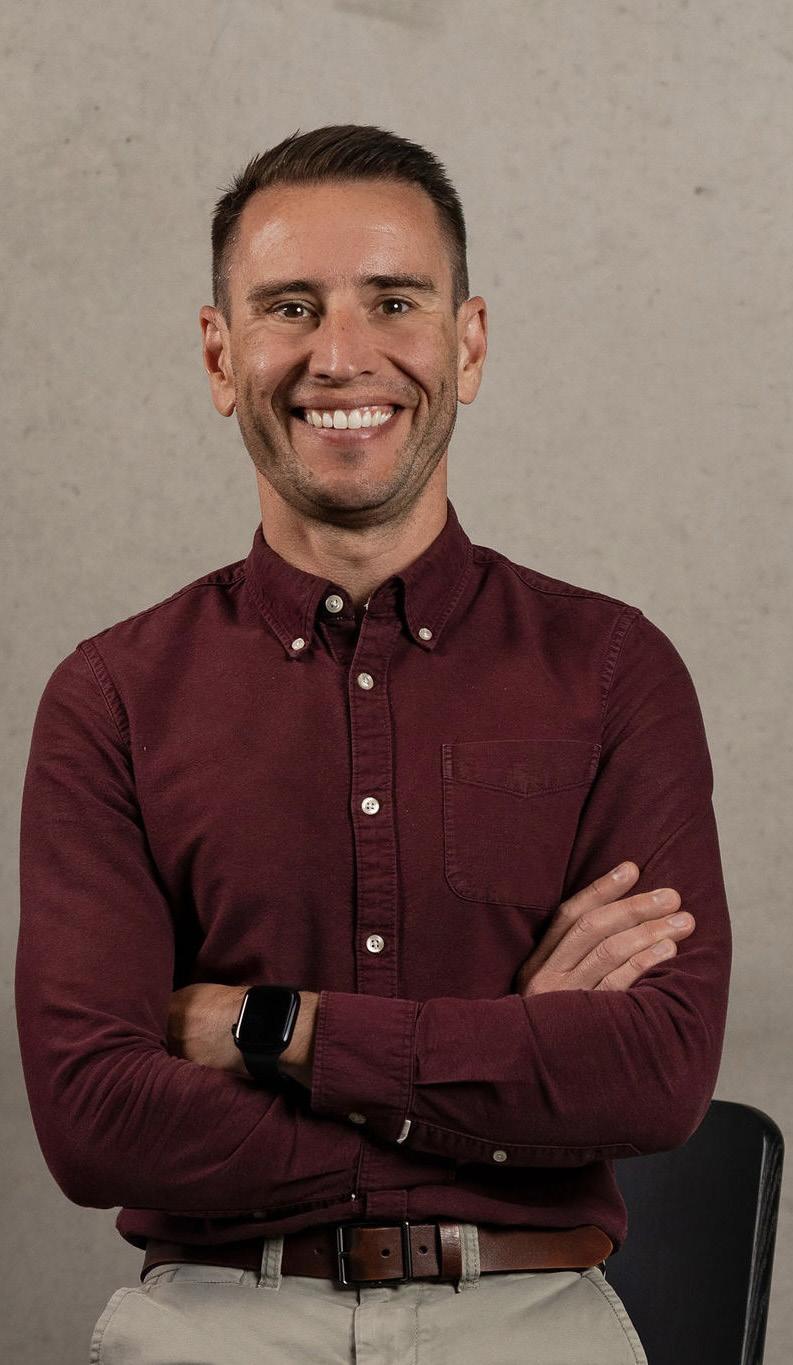
PAUL RAWINSKI
“ That’s where my strengths lie: in planning and problem-solving, while still allowing room for creative design.
A career in architecture was always Paul Rawinski’s dream, though as a child, he once imagined becoming an astronaut or a Formula 1 driver.
Now an associate at Swanbury Penglase Architects, Paul never expected to return to Saint Ignatius’ College this quickly, let alone through work. At 43, he’s played a key role in designing the new Magis Centre, the long-anticipated sports and multi-purpose educational hub at our Senior School.
While Swanbury Penglase director Justin Carter, also a College parent, leads the project, Paul has overseen budget compliance, client approvals, key deliverables, and more.
“It’s been great to assist others in our office who weren’t familiar with the site, the naming conventions, or the school’s history,” Paul says. “It really takes you back. I never imagined returning to the College through work so soon, but I was genuinely thrilled when the project came through our office. It’s been fantastic to be part of it.”
Outside of education projects, Paul primarily works in the health sector, designing hospitals, dialysis clinics, and laboratories. He particularly enjoys the challenge of applying critical thinking.
“Especially for a refurbishment of an existing hospital, it’s about making everything work within a fixed footprint to suit clinical needs—how patients move through the space, how staff operate and the equipment flows. Finding those solutions is incredibly rewarding. That’s where my strengths lie: in planning and problem-solving, while still allowing room for creative design.”
At school, Paul says he was “probably more bookish than sporty,” but that’s changed in recent years. Now an avid triathlete, he’s taken the sport seriously for the past six years.
How does he fit it in?
“I train almost every day—around six hours a week during quieter periods, and up to 15 hours when I’m building towards a race. That usually includes three swims, three runs, and a couple of bike sessions.
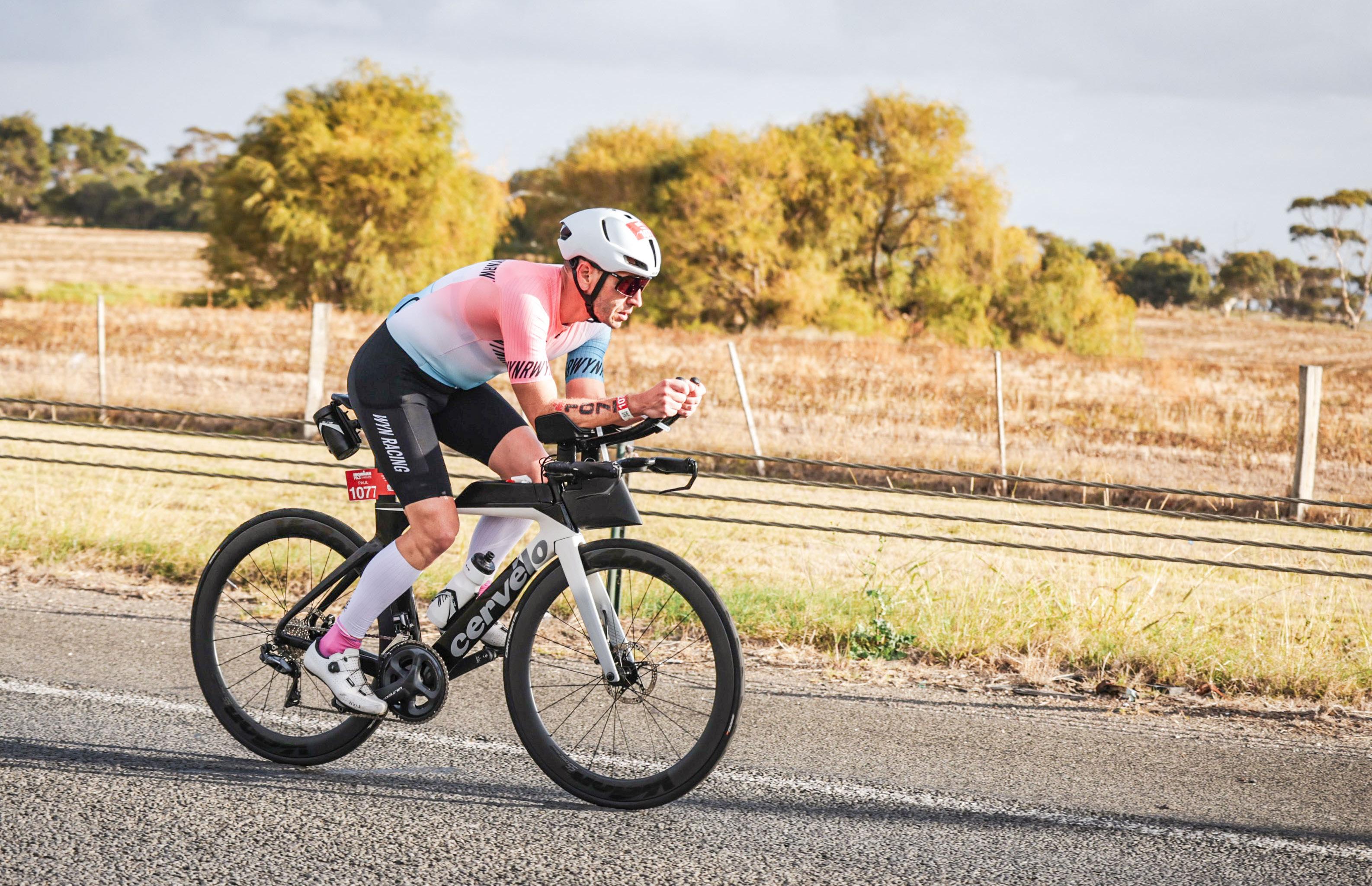
“I’ll swim early—about an hour from 7.15am—then shower at the office and start the day. I try to fit in a run at lunch, and ride in the evenings at home on a bike trainer in the spare room. Then on weekends, I’ll do a longer ride and a long run.”
Paul has used his endurance events to support a number of charities, including Parkinson’s SA, Make-A-Wish, and Muscular Dystrophy Australia. This includes shaving his head to raise funds for Parkinson’s research, inspired by his brother-in-law, Todd Murfitt—a school principal—who was diagnosed with youngonset Parkinson’s disease.
Paul’s wife, Penny, is a PE teacher at Annesley Junior School, and together they juggle work, training, and raising their two children: Blair, 10, and Alex, 8.
“We live a very active lifestyle. Penny plays a lot of sport herself, including Gaelic football, and travels for it. We’re really good at prioritising not just family life, but our own health and wellbeing. We both know how much it helps us, mentally and physically, and how much we love it.”
Paul attended Saint Ignatius’ alongside his younger brother, Mark, and reflects warmly on his time at the College.
“I think the College has many wonderful qualities that helped shape who I am, whether it was the pastoral care from staff, camaraderie among students, or the Jesuit philosophy, which teaches you to consider life beyond academics or religion.
“The focus on service and living through faith really influenced how I treat others and approach life. It also shaped my leadership. I had teachers who were true mentors, and I still think about the relationships they built with students. That’s the kind of leader I aim to be—not just as a parent, but with my colleagues and teams. I want to lead with the same care, respect, and integrity that my role models showed me.”

BIKE LEG OF THE 2025 GEELONG IRONMAN 70.3.
PAUL WITH THE SWANBURY PENGLASE HEALTH TEAM—DIRECTOR MATT RAVEN AND ASSOCIATE JASMINE BROOKSBY.
Peter Halstead
(CLASS OF 1975)
Now 68, Peter Halstead may not have planned a career in pharmacy, but his passion for helping others, along with a touch of serendipity, has led to decades of significant service to health and community.
Peter, you were previously honoured with the College’s Insignis Gold Medal for outstanding achievement and contribution. How would you characterise your time as a student?
I was very honoured and surprised to have won the award as there were many other people who would have been worthy recipients.
I would describe myself as a student as someone who had lofty goals and expectations but who, at times, was not always willing to undertake the necessary work to achieve the desired outcomes.
As an old scholar, what are some of your most memorable experiences from your time at the College?
Unusually perhaps, I had the experience of attending three different Jesuit operated colleges in three different states: Saint Aloysius’ in Sydney, Saint Louis (as it was then) in Perth, and Saint Ignatius’ in Adelaide.
With the employment of my parents, we moved to a number of states, starting in Sydney—from where my family originated and in which there are strong ties—and arriving finally in Adelaide, having been to Brisbane and Perth on the way. [Peter’s dad was an accountant, and his mum worked in administration.]
Saint Ignatius’ had recently transitioned to co-education and moving from all boys’ private schools, there was a lot to understand and to come to terms with. The Athelstone campus offered a diversity, and as a result, a level of inclusion not as obvious previously. It provided a true preparation for life [beyond school].
You juggle roles as a clinical adviser at the Australian Health Practitioner Regulation Agency and a senior pharmacist at the Australian Pharmacy Council. What inspired you to pursue pharmacy, and what have you found most rewarding about the profession?
I am sure some people are inspired when they choose their career pathways, but I am not one of those. I originally chose to
study dentistry, as did my brother in the year behind me, but it became evident that my manual dexterity was lacking or perhaps non-existent.
A faculty advisor at that time kindly, but perhaps a little harshly, asked if I wanted to be ‘rubbish’ at what I did for the rest of my life. At this point, luck played its part, and pharmacy offered me a refuge which I gladly accepted.
The profession of pharmacy provides a level of accessibility that sometimes is not as evident in other professions. In the first phase of my professional career, I thrived on my engagement with community members and the little differences my contributions could make to their health and lives. It was almost never life-altering, but it could be life-assuring.
Later in my career, I had the chance to contribute more broadly to my profession and the community through activities such as training, mentoring and policy work.
My small contribution to assist in the work done to navigate health in general and pharmacy, in particular through the COVID-19 pandemic, was terrifying, exhausting and immensely rewarding all at the same time.
I cannot be prouder to call myself a health professional. I owe that faculty advisor a debt of gratitude.
What have been some standout moments in your career, such as receiving the Pharmaceutical Society of Australia’s Lifetime Achievement Award and supporting overseas-trained pharmacists?
Highlights of a career are an interesting concept because of the length of time a career occupies. If you are lucky, you can sometimes be recognised for your efforts, but many exceptional contributors are not recognised for various reasons. When I think of highlights, it is a bit of mixed bag.
I think of the pharmacist who was a former health minister in a state government in ‘the Sudan’, as it was then, and the
conversation we had about his six-year journey across the world to reach Australia with his wife and children.
As he sat across the desk from me, I noticed he had no fingernails. It turns out they were removed as part of the torture he suffered as a member of a minority. We worked with him to successfully integrate him into the Australian healthcare workforce.
Since that time, he has returned to the new nation of South Sudan, with his youngest son, to assist in the establishment of pharmacy services and a pharmacy program at a university.
I also think of the management of maintaining the operation of pharmacies as an interface for the community and the ongoing delivery of services at the height of the pandemic.
Really my highlights all revolve around the satisfaction gained from dealings with the many people I encounter, doing their very best to make a difference for the better of those around them.
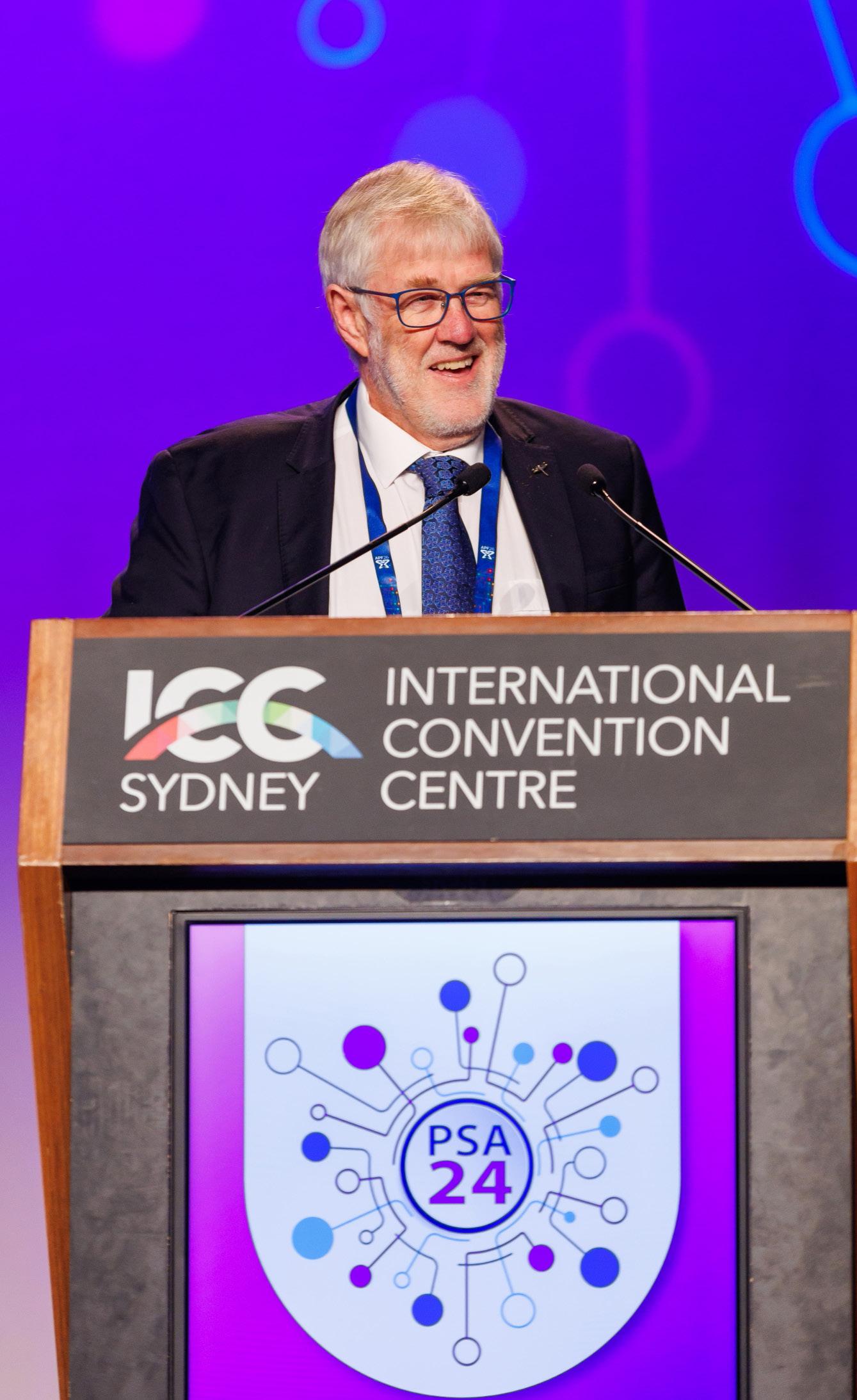
“ If you are lucky, you can sometimes be recognised for your efforts, but many exceptional contributors are not recognised for various reasons.
PETER HALSTEAD AT THE PHARMACEUTICAL SOCIETY OF AUSTRALIA NATIONAL CONFERENCE IN SYDNEY LAST YEAR.
PETER HALSTEAD
Justin Beilby
(CLASS OF 1974)
Professor Justin Beilby’s career has taken him from overseas clinics to university leadership, guided all the way by a passion for helping people and a love of learning.
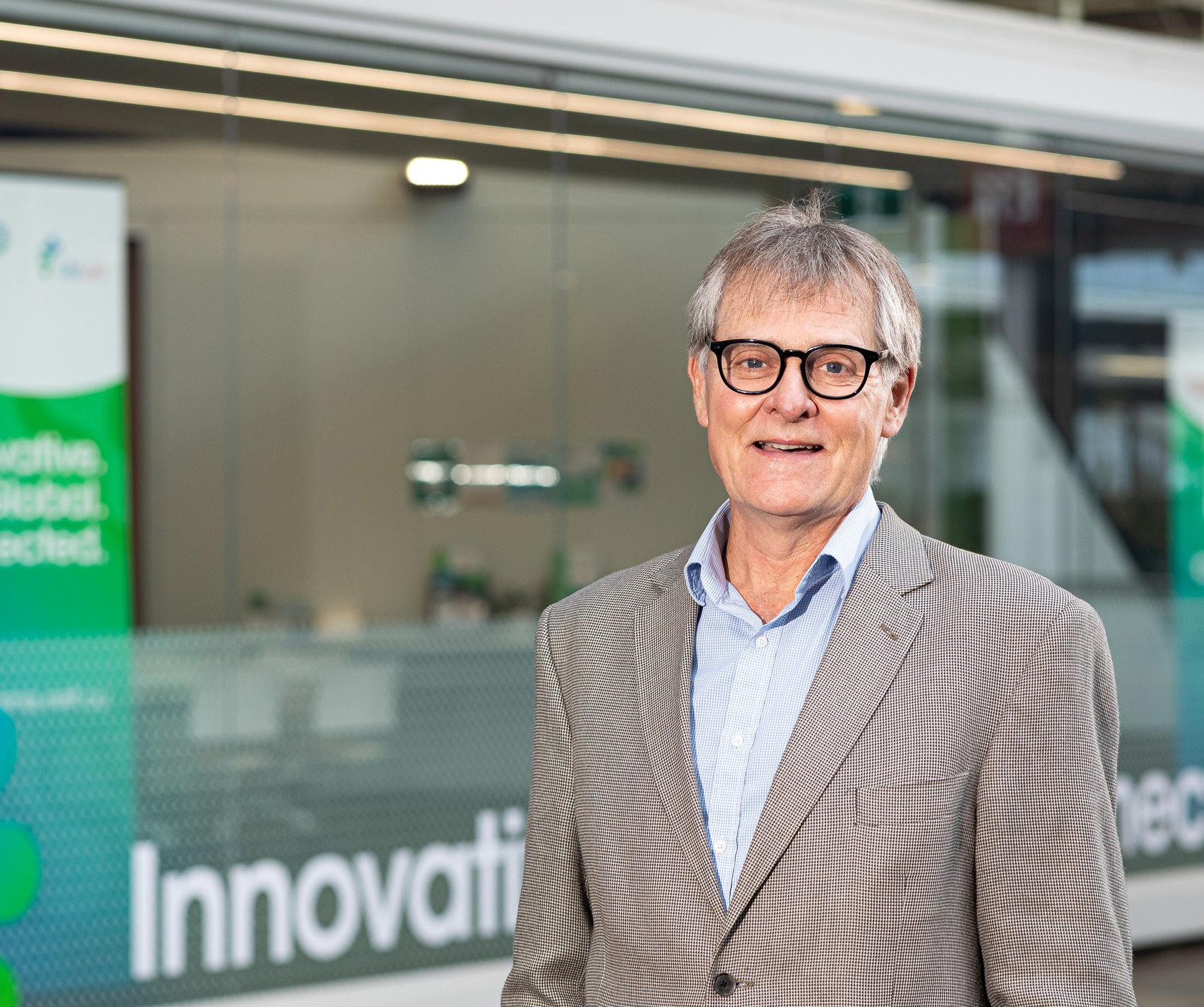
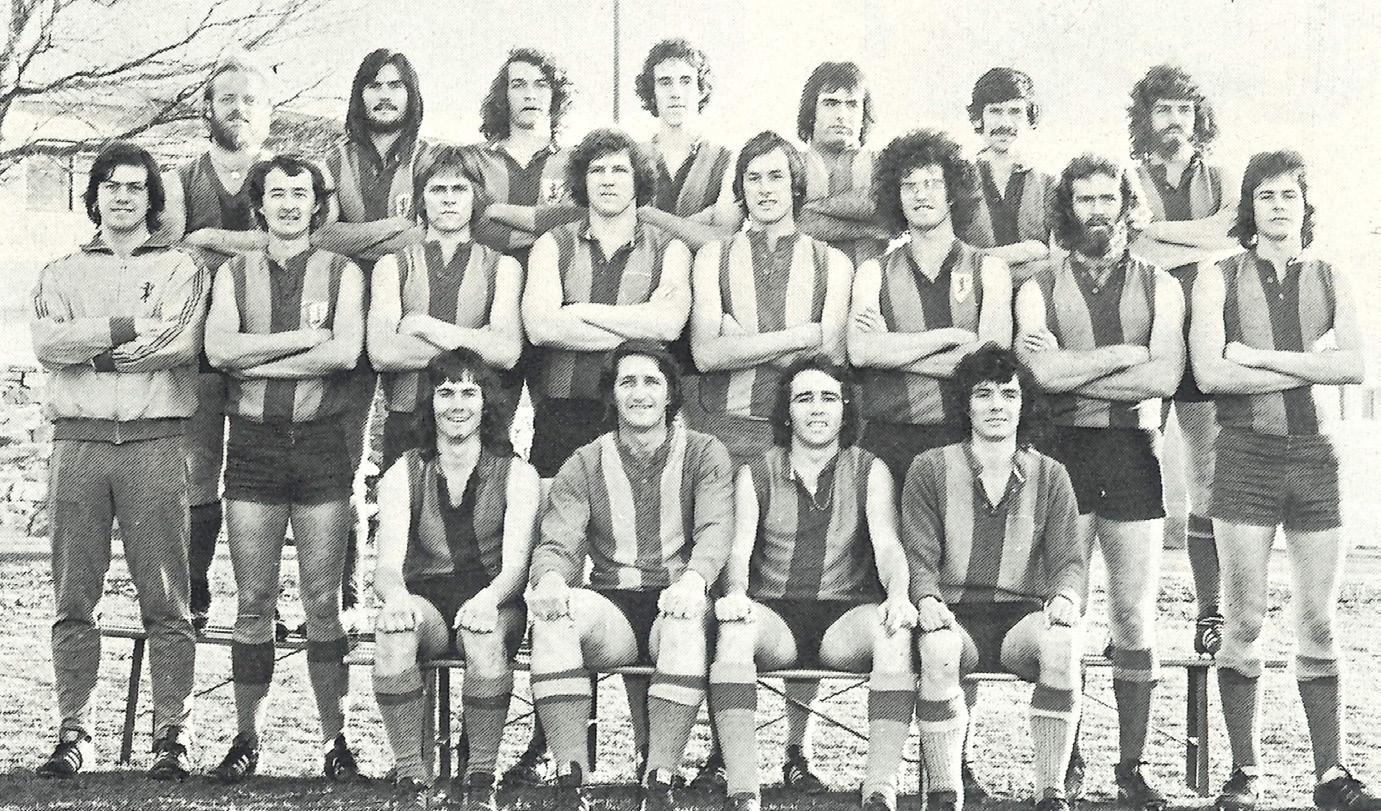
“Follow your own journey.” That’s the advice Professor Justin Beilby offers to current students at Saint Ignatius’ College— wisdom he’s clearly taken to heart himself.
Now 68, he has taken an unconventional path from general practitioner to university vice-chancellor. “It’s not a pathway that many GPs choose but it’s been so rich and so enjoyable. So, take your time to choose what you love to do because your working life does go for many years.”
Professor Beilby first took after his father, Jack, in becoming a GP. “I’d always wanted to work with people, helping people move forward with their lives, and I couldn’t get that out of my system.
“I also really liked the idea of the freedom and the flexibility of medicine. There’s so much choice with your career, so much travel, and it fitted my personality. I’ve had a really lovely career as a doctor and have gone in many different directions, which is what medicine does for you.”
He studied at the University of Adelaide, which included a student placement in India. After graduating, he volunteered as a doctor in Papua New Guinea and worked in the United Kingdom, where he met his wife, Sue. They have three sons: Tom, 35, Joe, 33, and Jonathan, 30.
Working overseas proved a fantastic training ground. “It teaches you the value of the ability to problem-solve. So, for example, if you had complex issues with kids who are sick in Papua New Guinea, you have to find a solution with limited resources. And that’s what general practice is all about—dealing with uncertainty and working closely with a great range of people who come in the door to find a way forward.”
Following his overseas stint, Professor Beilby spent many years as a GP in Adelaide before moving into research. As he says: “I love data, I love finding out new things. I love solving problems. I love testing models and hypotheses and ideas.”
He went on to serve as the Executive Dean of the Faculty of
Health Sciences at the University of Adelaide for a decade, leading the academic development of the $250 million Medical and Nursing School. In 2008, he was appointed one of 12 Commissioners for the National Health and Hospitals Reform Commission, which developed a new model for the Australian healthcare system.
More recently, he was the Vice-Chancellor of Torrens University Australia for five years before transitioning into a part-time role as an emeritus professor, focused on research development and leadership.
Also an inaugural member of the SAHMRI Board, he is currently leading an international research project, examining and developing new models for managing frailty. “It’s been an extremely enjoyable working life, and I think the base that I had out of Athelstone [at the College] has been an incredibly important foundation to allow me to do what I want to do.”
One of seven children, Professor Beilby’s three brothers also attended Saint Ignatius’ College, while his three sisters went to Loreto College.
On family, he says: “The thing I’ve learned over many years is get the balance right with your own personal life, personal career, social values, and family. Don’t underplay the importance of family and do not lose this focus going forward. Finally, take the advice of mentors along the way; it certainly helped me.”
In a full-circle moment, Professor Beilby—who spent his early years in Peterborough in the Mid-North, where his father was a GP—is now looking to combine his research work with serving as a rural locum.
A locum is a temporary healthcare professional who fills in for a permanent staff member, often in rural areas, to cover leave or other absences.
“Rural GPs are under such significant work pressure, and by providing locum relief, I can help in a small way,” Professor Beilby says.
JUSTIN BEILBY IN THE OLD IGNATIANS A4 FOOTBALL PREMIERSHIP TEAM IN 1975 (MIDDLE ROW, THIRD FROM LEFT).
Stephanie Ockenden
(CLASS OF 2003)
At 38, Stephanie reflects on how her early love of English and Art ignited a dynamic career in marketing, media, and creative direction—blending professional success with creativity.
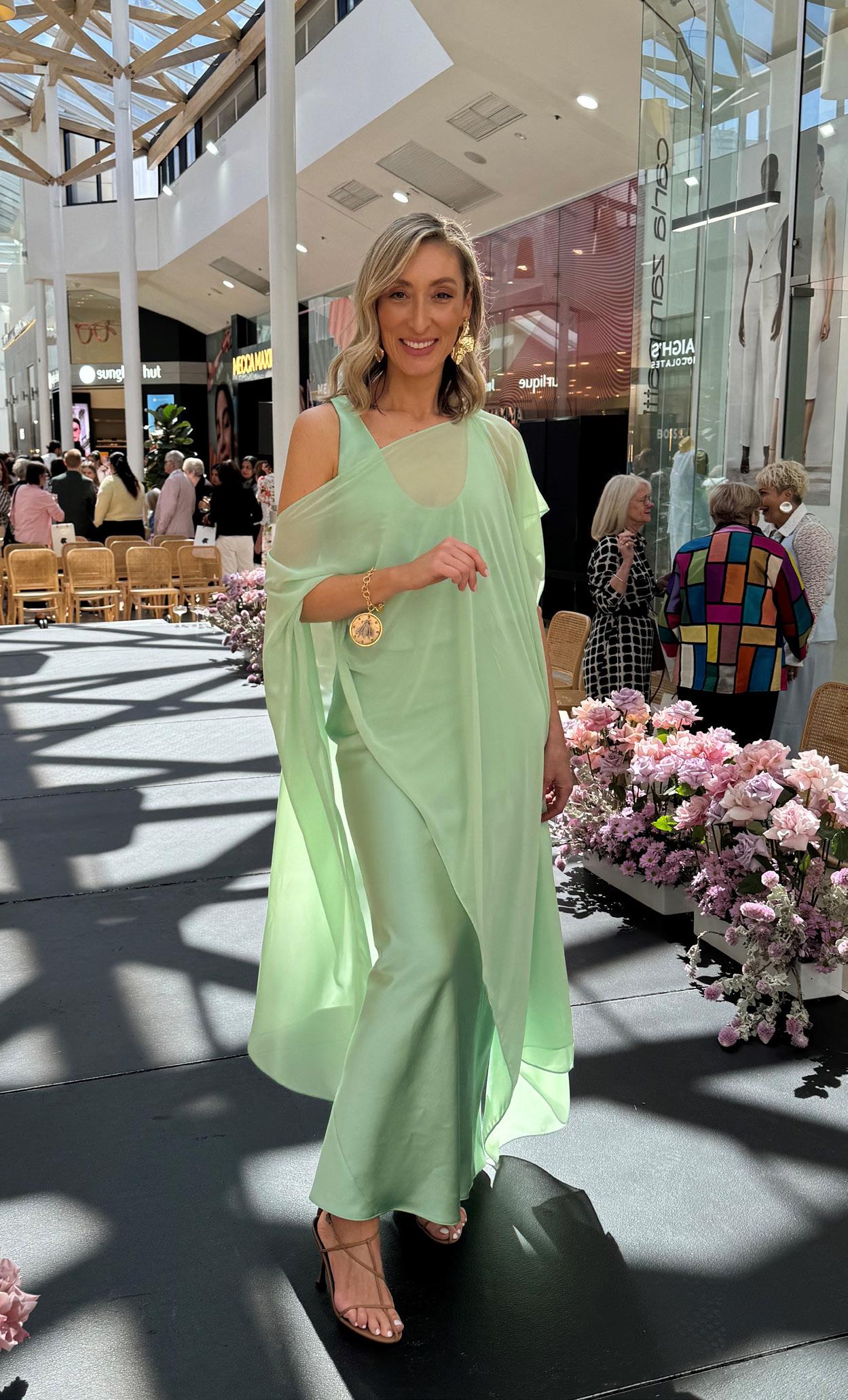
Hi, Stephanie. As an old scholar, what are some of your most memorable experiences from your time at the College?
I loved school—I recall getting the award for no absent days, ha!
Looking back, my best memories at the College are all about English and Art, especially because of [teacher] Mrs Wedge. She really inspired me, and those subjects shaped my love for creativity.
That passion has stuck with me through my career in marketing, public relations, and creative direction. Not much has changed. I still have a great affinity for the arts.
What inspired you to pursue a career in lifestyle media, and what have been some of your standout moments along the way?
I’ve always been passionate about marketing and PR, and my career really took shape through roles at the Seven Network, the Art Gallery of South Australia, and in consulting.
While at Seven, I managed marketing and communications campaigns for flagship programs like 7NEWS, My Kitchen Rules, House Rules, Packed to the Rafters, The X Factor, and Home & Away
I coordinated talent appearances, secured interviews, and executed promotional events that boosted viewership and ratings. This was from 2009 to 2016 when Seven dominated in the ratings—before streaming!
As the network marketing operations manager in Sydney, I led nationwide marketing and communications for major events such as the Rio Olympics campaign, overseeing the 7 Rio app and ensuring brand consistency across all platforms.
I also creatively directed marketing shoots for key programs like The X Factor, with my favourite series featuring Guy Sebastian, Iggy Azalea, and Adam Lambert—a very cool trio.
Returning to Adelaide, I took on the head of communications role at the Art Gallery of South Australia. I was responsible for the
national communications strategy for high-profile exhibitions like Quilty [celebrating contemporary artist Ben Quilty], which drew nearly half a million visitors.
I also led the communications strategy for the gallery’s rebrand and managed major exhibition launches, including Frida & Diego: Love & Revolution—honouring Frida Kahlo and Diego Rivera— collaborating with international institutions, securing sponsors, and leveraging key partnerships.
A memorable activation was the Frida Fever campaign I led in collaboration with the Adelaide Economic Development Agency at Rundle Mall, which generated significant buzz and engagement around the exhibition.
In my marketing and PR consulting work, one of the most exciting projects I’ve worked on was the launch of Mastercard’s Summer of Sport campaign, announcing its sponsorship of The Ashes and the Australian Open.
I coordinated with the Mastercard team to deliver a major publicity event at [Sydney’s] Centennial Park featuring [tennis star] Lleyton Hewitt and [cricketer] Mitchell Starc, which garnered national media coverage.
Additionally, I organised a ‘Barbie Army’ for The Ashes across Australia [with female cricket fans, dressed in pink, rivalling England’s famous Barmy Army supporters]. The creative campaign not only garnered national attention but also energised the community and fans around the event.
As a consultant, I have collaborated with both agencies and clients to lead brand and PR strategies, including the launch of [arts organisation] Carclew’s refreshed brand and strategic plan, working closely with government and media.
Alongside that, I’ve partnered with local brands on creative direction, overseeing and styling photoshoots to bring their marketing campaigns to life. It’s a lot of fun and a creative outlet for me!
You also produce your own art. How did that come to be? Can you tell us more about your creative process, and what you produce?
Yes, I do [create art]! This came about after building our home in 2019. [Stephanie met her husband, Andrew, at 17, while they were both working their first jobs at Burnside Village. Andrew is now the CEO of the Civil Contractors Federation SA.]
We had a big, white, plain wall that needed filling, and I couldn’t find the right piece of art for it, within budget. So, I decided to create my own.
I posted a photo of it online, and my friends, Ellie and [Crows player] Taylor Walker, asked me to paint one for their new house too; it grew from there. I sell my custom-made pieces online via Contemporary Co.
“I posted a photo of my art online, and my friends, Ellie and Taylor Walker, asked me to paint one for their new house too; it grew from there.

As a busy mum, how do you manage to balance everything?
My kids are aged eight, five, and three. It’s just started ramping up with school sports, so I’m a little nervous about how I’ll manage this. Watch this space!
You’re also a host, emcee, and content creator. Is this type of work as glamorous as it appears?
I host events from time to time. I have hosted several season launches for [fashion label] Viktoria & Woods and for Burnside Village. As an active consumer of fashion and trends, I love being being involved in these events.
My content creation is fairly ad hoc. I just share things that I am involved in and enjoy; it has just evolved from there!
STEPHANIE OCKENDEN WITH ONE OF HER ART PIECES.
STEPHANIE OCKENDEN
